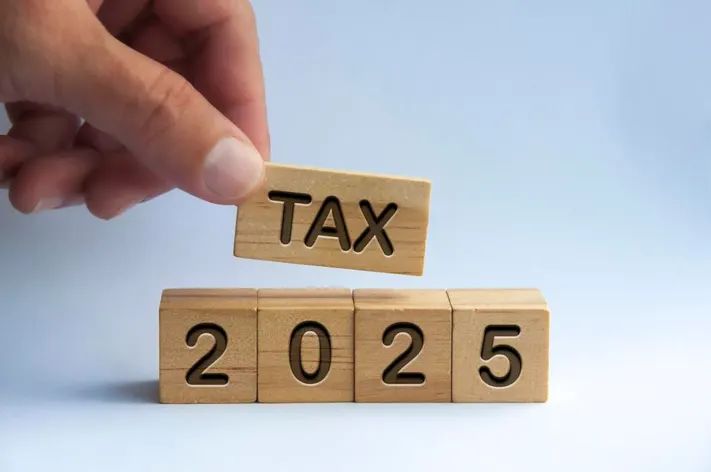ITR Filing for Crypto Income in FY 2024–25: A Complete Guide for Indian Taxpayers

Cryptocurrency has gone mainstream in India, with millions of users trading Bitcoin, Ethereum, and meme coins like DOGE and PEPE. But while crypto investing may seem exciting, many users remain confused about one key obligation: income tax return (ITR) filing for their crypto earnings.
For Financial Year (FY) 2024–25, the Income Tax Department of India has tightened the reporting norms for crypto transactions. This guide will help you understand how to report crypto income in ITR, the applicable tax rules, and the forms to use.
📌 Is Crypto Taxable in India?
Yes. As per the Finance Act 2022, crypto income is taxable under a special provision.
The government classifies cryptocurrencies and other digital assets under the term “Virtual Digital Assets (VDAs)”, which includes:
- Cryptocurrencies (Bitcoin, Ethereum, Solana, etc.)
- NFTs (Non-Fungible Tokens)
- Any other blockchain-based token
🔍 Tax Rate on Crypto Gains in FY 2024–25
| Income Type | Tax Rate |
|---|---|
| Profits from sale of crypto | 30% flat + 4% cess |
| TDS on transactions | 1% TDS u/s 194S |
🚫 No deductions (except cost of acquisition) or loss set-off is allowed.
So, if you made ₹1,00,000 in profit trading crypto in FY 2024–25:
- You pay ₹30,000 in tax + 4% cess = ₹31,200
- Plus, if you sold assets worth more than ₹10,000, the platform would deduct 1% TDS at the time of sale
🧾 TDS on Crypto: Section 194S Explained
Introduced from July 1, 2022, Section 194S mandates that:
- A 1% TDS is deducted on crypto transactions exceeding ₹10,000 in a financial year
- For individuals not audited under tax, the TDS threshold is ₹50,000/year
TDS is deducted by the exchange if you’re using Indian platforms like CoinDCX, WazirX, or CoinSwitch.
🔢 How to Calculate Crypto Tax in FY 2024–25
- Identify all your trades – profit and loss separately
- Calculate gains per trade: Gain = Selling Price – Cost of Acquisition
Example: Buy 1 ETH at ₹1,50,000 → Sell at ₹2,00,000 → Gain = ₹50,000 - Ignore any expense (like gas fees or trading charges) – not deductible
- Pay 30% tax on total gain

📋 ITR Forms for Crypto Reporting
✅ For Individuals & HUFs:
Use ITR-2 or ITR-3
- ITR-2: For salaried individuals or pensioners who have capital gains from crypto
- ITR-3: For those with business income (like frequent crypto trading)
If you are earning only from salary + crypto, ITR-2 is sufficient.
🧠 Crypto Income Types and ITR Treatment
| Crypto Income Type | How It’s Treated | ITR Section |
|---|---|---|
| Buy and Sell (Profit) | Capital Gains / Business Income | Capital Gains or PGBP |
| Mining Income | Business Income | ITR-3 |
| Airdrops / Rewards | Income from Other Sources | ITR-2 / ITR-3 |
| NFTs trading | Capital Gains | ITR-2 / ITR-3 |
| Gifts in crypto | Taxable if value > ₹50,000 | Other Sources |
🧾 Step-by-Step: How to File ITR for Crypto in FY 2024–25
Step 1: Collect Crypto Transaction Data
- Use transaction history from exchanges
- Include international platforms like Binance, Coinbase, or KuCoin
- Export as CSV if needed
Step 2: Segregate Transactions
- Group into profits, airdrops, staking rewards, gifts
- Highlight date of purchase, sale, and amount
Step 3: Report in ITR
- If capital gains: Report under Schedule CG (Capital Gains)
- If business income: Use Schedule P&L and Balance Sheet
Step 4: Reconcile with Form 26AS
Ensure 1% TDS deducted appears in your Form 26AS or Annual Information Statement (AIS).
Step 5: Pay Remaining Tax
- After adjusting TDS, pay the balance 30% crypto tax
- Use challan ITNS 280 to pay advance/self-assessment tax
❗ Important Reminders for FY 2024–25
- 🔍 TDS applies even if there’s loss on the transaction
- 💰 No indexation benefits for long-term crypto gains
- 🚫 Crypto losses cannot be set off against any other income (including crypto gains from another coin)
- 🌐 Tax applies even if trading on foreign exchanges
- 🪙 Crypto earned via airdrops, games, or staking is taxable on receipt
🧮 Crypto Tax Example FY 2024–25
Imagine you did the following:
- Bought BTC for ₹3,00,000 and sold at ₹4,20,000 → Profit = ₹1,20,000
- Received ₹10,000 in staking rewards
- Sold NFTs worth ₹80,000 bought for ₹50,000 → Gain = ₹30,000
Your total taxable crypto income:
- ₹1,20,000 (BTC gain)
- ₹10,000 (rewards)
- ₹30,000 (NFT gain)
➡️ Total = ₹1,60,000
Taxes:
- ₹1,50,000 taxed @ 30% = ₹45,000 + cess
- ₹10,000 (rewards) taxed as “other income” as per slab

🧠 FAQs: ITR Filing for Crypto Income FY 2024–25
Q1. Can I file ITR without showing crypto gains?
No. The Income Tax Department has access to VDA data via exchanges and Form 26AS.
Q2. What happens if I skip reporting crypto income?
You may receive a notice under Section 148 for under-reporting income and face a penalty.
Q3. Can I offset crypto losses with stock market gains?
No. Crypto losses cannot be adjusted or carried forward.
Q4. Is tax applicable even on crypto gifts?
Yes, if the gift value exceeds ₹50,000, it is fully taxable under “Income from Other Sources.”
Q5. Which ITR is best for crypto freelancers?
Use ITR-3 if you have regular crypto earnings treated as business income.
✅ Final Thoughts: Be Smart, File Right
India’s crypto tax laws are now very clear. Whether you’re a casual investor or a serious trader, reporting crypto income accurately in your ITR is not just smart—it’s mandatory.
👉 Keep transaction records
👉 File the correct ITR form
👉 Pay the 30% tax + cess
👉 Claim your 1% TDS credit properly
With better compliance, you stay safe and avoid any surprises from the Income Tax Department.
ALSO READ-How to Correct Mistakes in ITR After Filing FY 2024–25
🔔 Want to Simplify Crypto Tax Filing?
Explore platforms like:
- KoinX
- Binocs
- Zerodha Tax Reports
- Quicko Crypto Tax Filing
They integrate with exchanges and auto-generate tax reports for easy filing.





